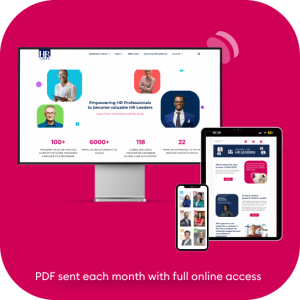Sympathy, understanding, compassion, kindness, generosity—these are all synonyms for empathy. Empathy allows us to be more open and understand our environment and the people around us.
Many people undermine the importance of empathy in a bustling work setting, especially in employee management and recognition. An empathetic workplace shows a healthy working relationship between colleagues and a thriving working environment that fosters kindness.
In this article, we will discuss what empathy is, its role, and how you can increase empathy in the workplace.
What is empathy?
Empathy, in a broad sense, is the ability to see and understand another person’s feelings. It goes beyond just recognizing someone else’s emotions and thoughts—empathy means being able to feel someone else’s joy and pain, putting yourself in their shoes, and seeing situations from their perspective.
Many people confuse sympathy and empathy. While both may stem from one’s effort to feel for another, sympathy is more deeply rooted in pity than empathy’s deep emotional connection to sharing someone’s feelings—be they joy or sorrow.
Empathy in the workplace
Empathy in the workplace is an important trait not only for leaders but also for staff members. An empathetic person can become a strong support system for their colleagues in times of distress or hectic work schedules, helping them to be more motivated to finish tasks.
Empathy also plays a crucial role in leadership. While outstanding leadership requires a mix of soft and hard skills and traits, empathetic leadership allows for a more productive and open workplace environment.
According to Forbes, studies suggest that workplace managers who show empathetic leadership are more innovative, engaged, and able to retain more talents in the organization than leaders who lack empathy for their employees.
“Empathy attracts more empathy,” says Thomas Medlin, Co-founder at JumpMD. “When we foster and thrive with empathy in the workplace, our employees do the same too. More than a character trait, empathy is a teachable skill and can be developed when someone is around empathetic people.”
Kinds of empathy in the workplace
Empathy allows organizational leaders to build meaningful relationships in the workplace, motivating people to work towards organizational goals when they know that they are felt and heard.
There are three kinds of empathy you may see in the workplace, including:
- Cognitive empathy. Cognitive empathy is basically empathy by thought. It means you can put yourself in someone else’s situation without sharing their emotional experience. This empathy helps build stronger relationships with colleagues by sharing their experiences and thoughts.
- Emotional empathy. As the word suggests, emotional empathy is when you share and feel another person’s emotions and feelings, truly understanding how they feel and why they feel the way they do. Emotional empathy usually means mirroring another person’s feelings—you smile big when they’re happy and cry when they’re sad.
- Compassionate empathy. In between cognitive and emotional empathy is compassionate empathy, where you not only share a person’s feelings and emotions but also act on your thought process to provide practical solutions to their problems.
How do you become empathetic in the workplace?
An empathetic workplace starts with empathetic leadership to foster an empathetic working environment. When workplace leaders show the pack that being empathetic is the norm, the people, in turn, will practice empathy in the workplace and even outside of it.
Be interested in your employee’s lives
The lines between work and personal life are increasingly blurred, and it’s inevitable for employees to become burdened by personal matters, even during working hours.
To foster an empathetic workplace environment, it is important to check in on them regularly, ask them how they’re doing, even their daily horoscopes, encourage transparency, and let them know and feel that you are someone they can talk to (when they’re comfortable doing so) about professional and personal matters that may be affecting work.
Share interest in their goals and plans
When you take an interest in your colleagues’ or employees’ lives, you also consider their future goals and plans for personal development within and outside the organization. This can include taking supplementary Latin classes, educational seminars, self-improvement classes, or taking further studies like master’s or doctorate degrees.
Grant Aldrich, Founder of OnlineDegree.com, says, “When you actively ask about their professional goals and plans, you make them feel involved, that you show interest in their professional growth, and that you have plans in place for them in the organization, thereby also reducing employee turnover.”
Be mindful of your choice of words
How you choose what words to say and what not to say can easily define who you are.
According to Phil Strazzulla, Founder at SelectSoftware Reviews, “An empathetic leader or person knows and feels what words or actions may hurt a colleague. Being mindful of the words you choose to say, no matter your intention, will play a big role in demotivating or encouraging your employees or colleagues.”
Rather than saying, “Why are you always doing it wrong?” try saying, “I’ve noticed you’ve made mistakes on the same thing many times now. Do you need help with this area?”
Listen to understand
Fostering empathy in the workplace requires every person in the organization not just to listen but listen to understand.
Often, we hear our colleagues and employees but do not actively listen to what they say and what they want to express. Listening to understand in an empathetic workplace also involves taking nonverbal cues, tone of voice, facial expressions, and gestures—understanding not only the words being said but also what is not being said.
Put yourself in other’s shoes
To increase empathy in the workplace, everyone in the organization must consider how their colleagues would feel in a certain situation.
Putting yourself in another person’s shoes means that, before taking action or giving advice or solutions, you put yourselves in their situation and what advice or action you may or may not like had the same thing happened to you.
Showcase appreciation
According to a piece from Harvard Business Review, 53 percent of respondents are likely to stay at a workplace that appreciates their hard work.
“This is not surprising, given that it is human nature to crave appreciation and validation, which motivates people to work harder for those who recognize their worth,” says Jerry Han, CMO at PrizeRebel.
Managers who actively show appreciation to their employees’ contributions to the workplace and their hard work are an important part of an empathetic workplace.
This can start from a simple “Thank you!” or “You’re doing great!” to actively organizing employee recognition and appreciation platforms and events.
Involve employees in decision making
Changes in the workplace are most often decided only by middle to top management. However, taking in employees’ input is also a sign of practicing empathy in the workplace.
This includes seeking their input on things that may involve their participation, like hybrid work arrangements. If verbal input is impossible, try using suggestion boxes or anonymous online forms.
Jesse Hanson, Content Manager at Online Solitaire & World of Card Games, “If employees openly know that their opinions are heard, especially in decisions involving their work, they would know that the organization values their opinions.”
Acknowledge everyone’s perspectives
We are all unique individuals coexisting in a single workspace, each with our beliefs and values. Empathetic leaders make sure everyone’s perspectives and points of view are heard when solving problems, managing conflicts, and finding resolutions.
Encourage time off and mental health breaks
Being empathetic means everyone values and recognizes their personal feelings—even those that may not be pleasant to feel or hear. This is why it is essential that in an empathetic workplace, employees and management at all levels can take time off when needed, no matter the reason, as long as work deadlines are met or appropriately arranged beforehand.
Be kind
It is not rocket science to say that, at the core of empathy in the workplace is one simple concept—be kind.
Our desire to be interested in each other’s goals and lives, mindful of our words and actions, show appreciation regularly and acknowledge everyone’s decisions and opinions stems from our desire to extend kindness to everyone in the workplace, no matter how busy we may be.
At the end of the day, empathy in the workplace begins with kindness and the desire to make it a pleasant environment to work in.
Guest writer.















































































